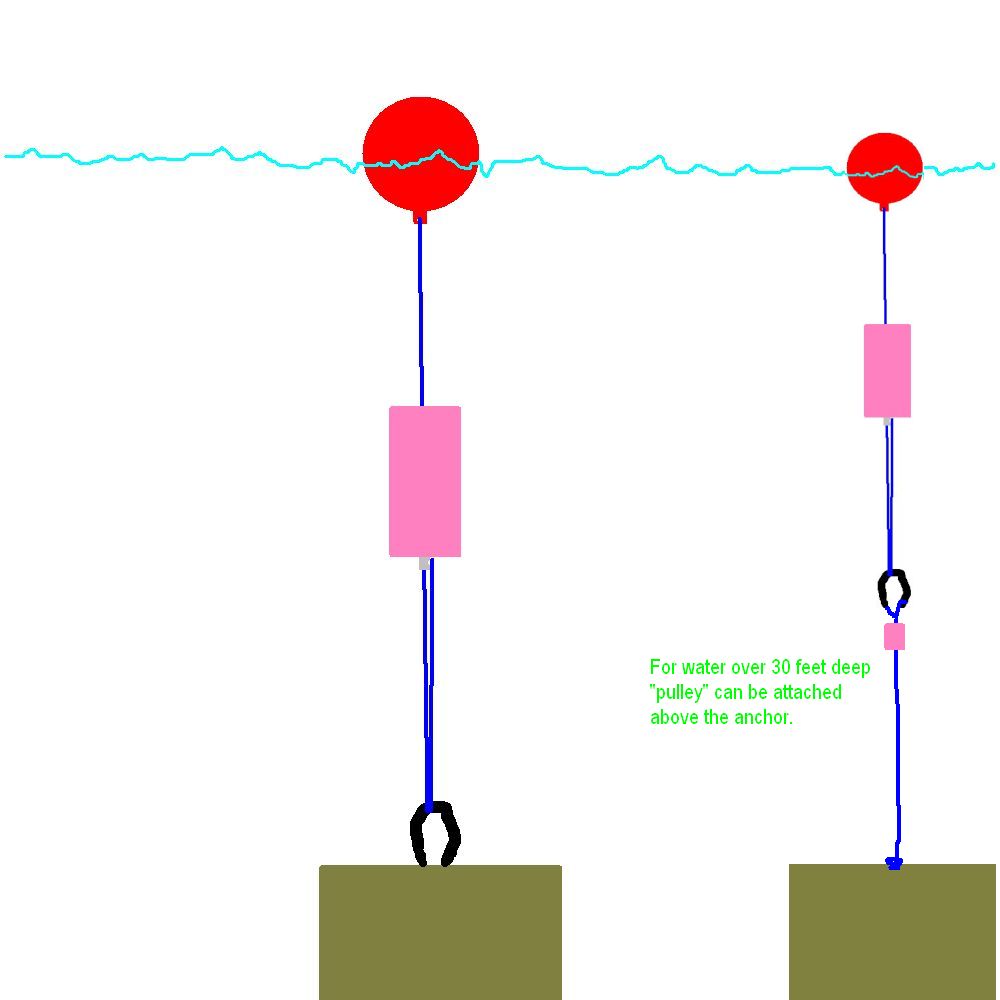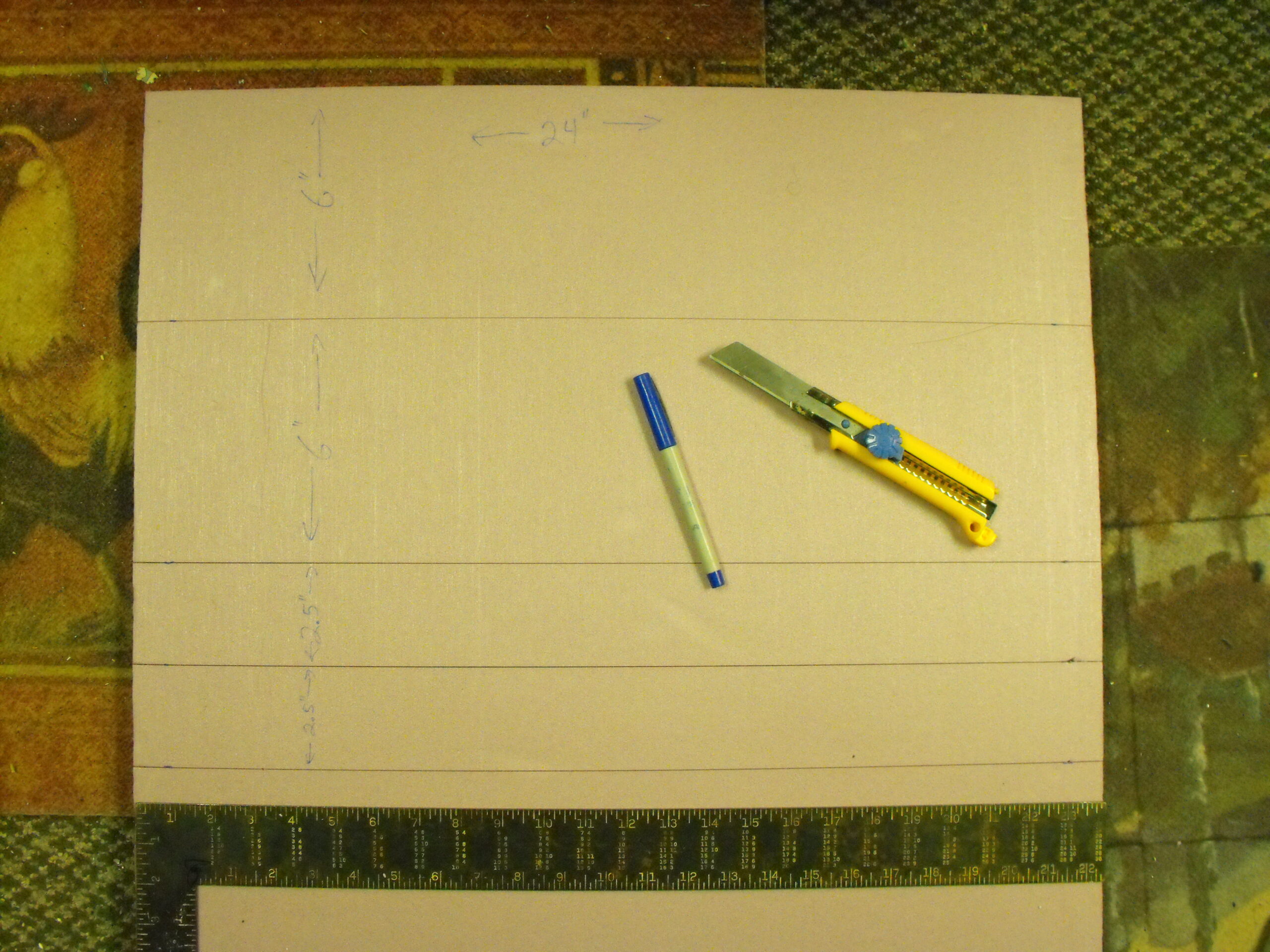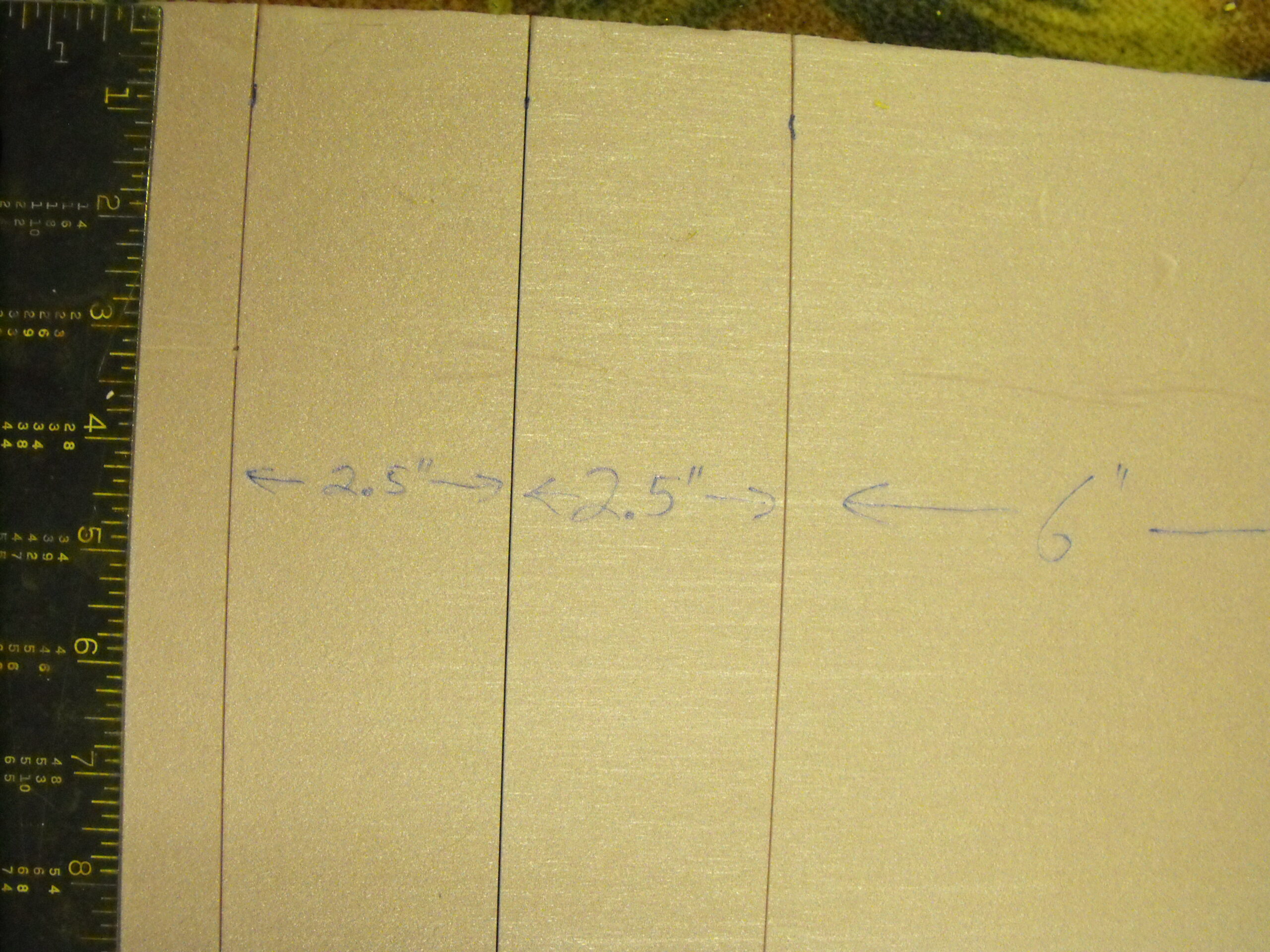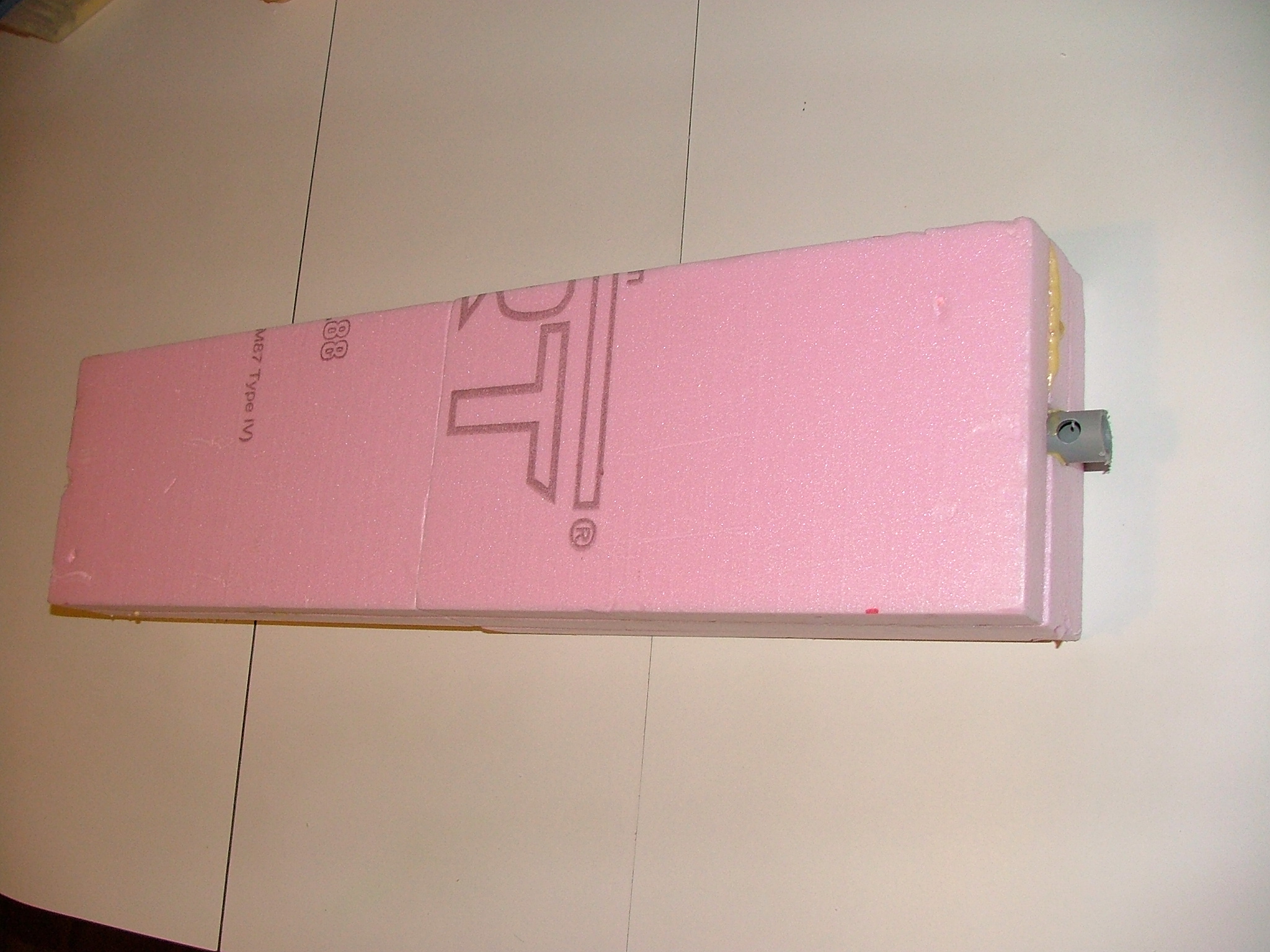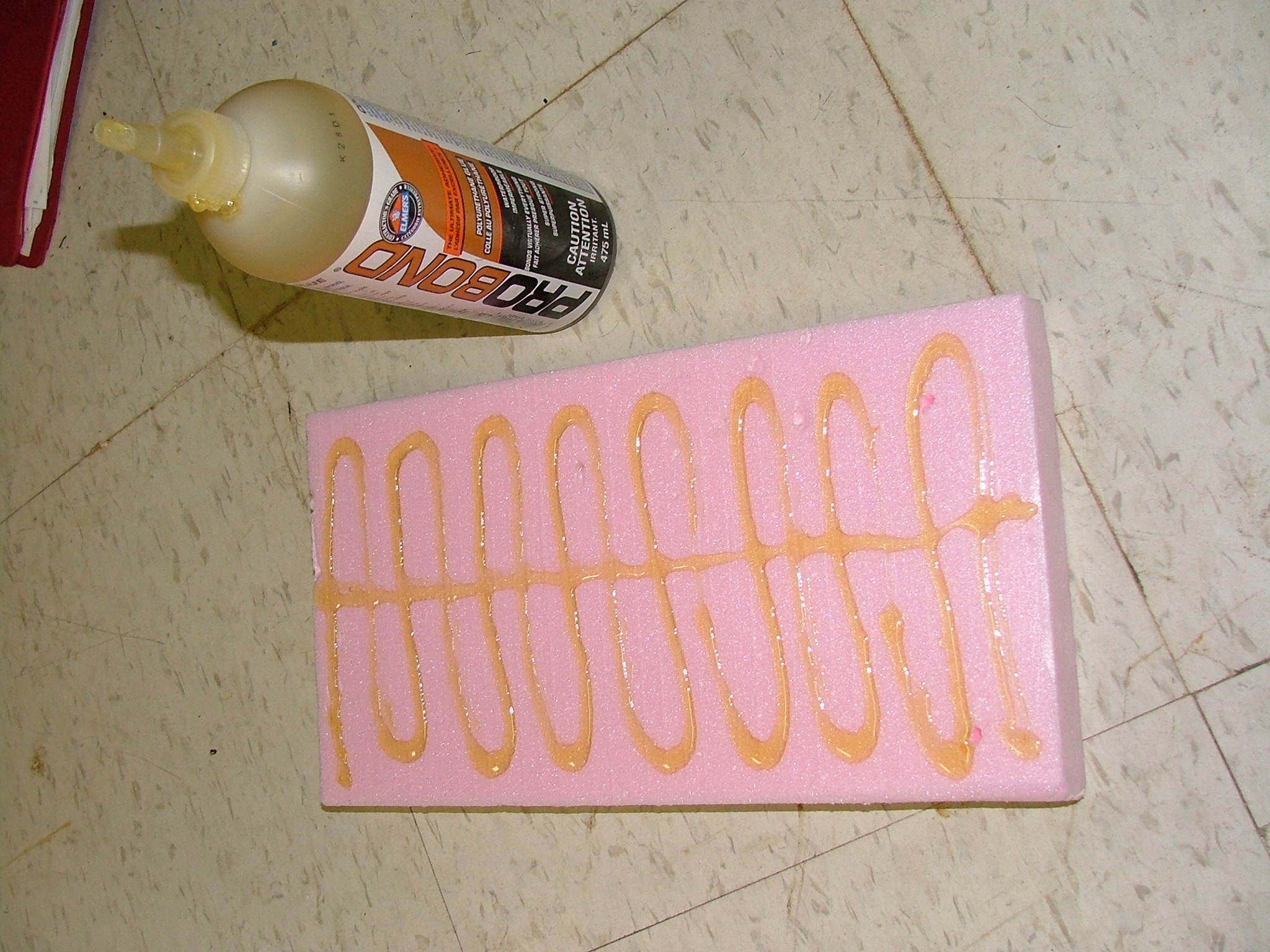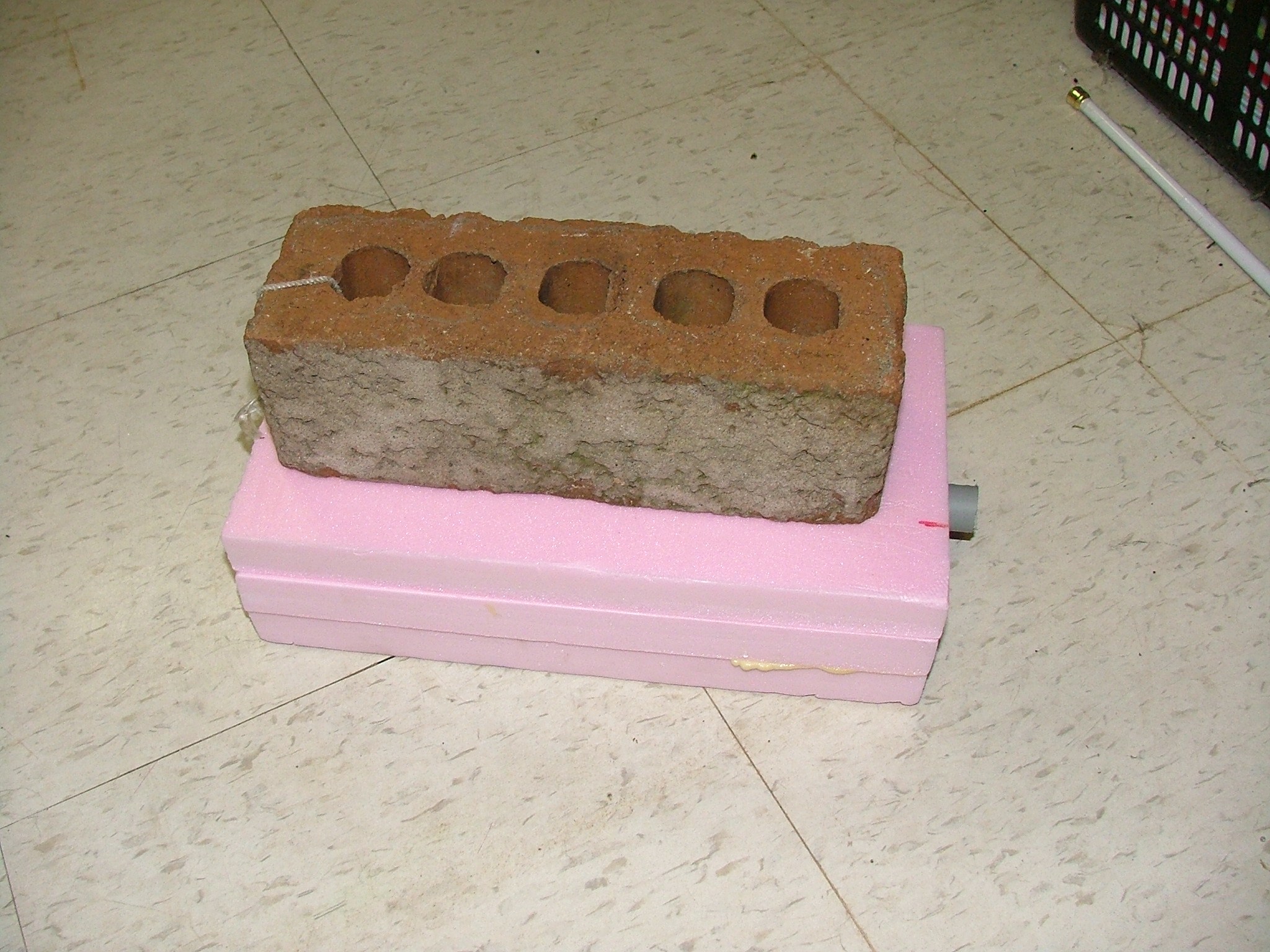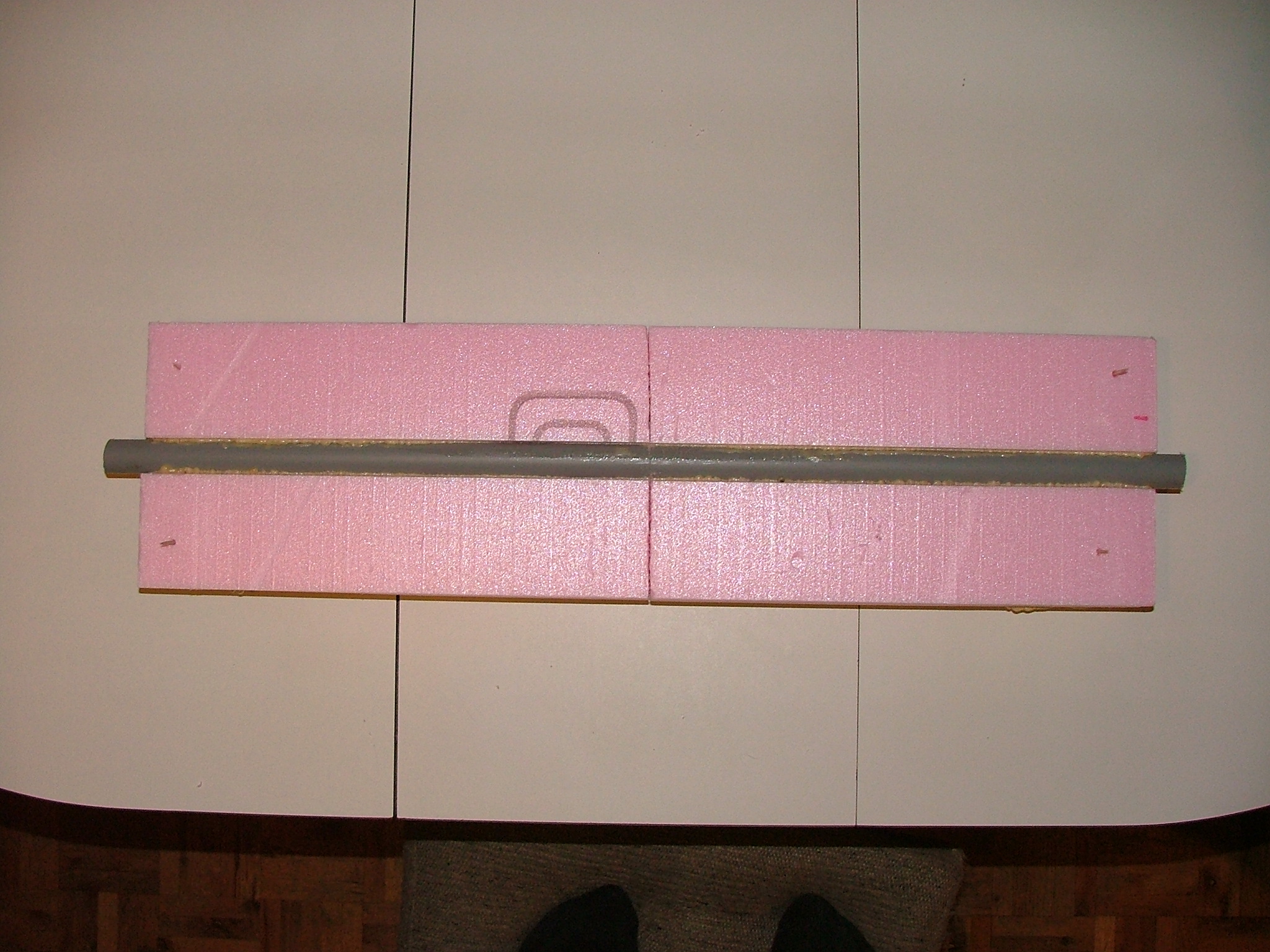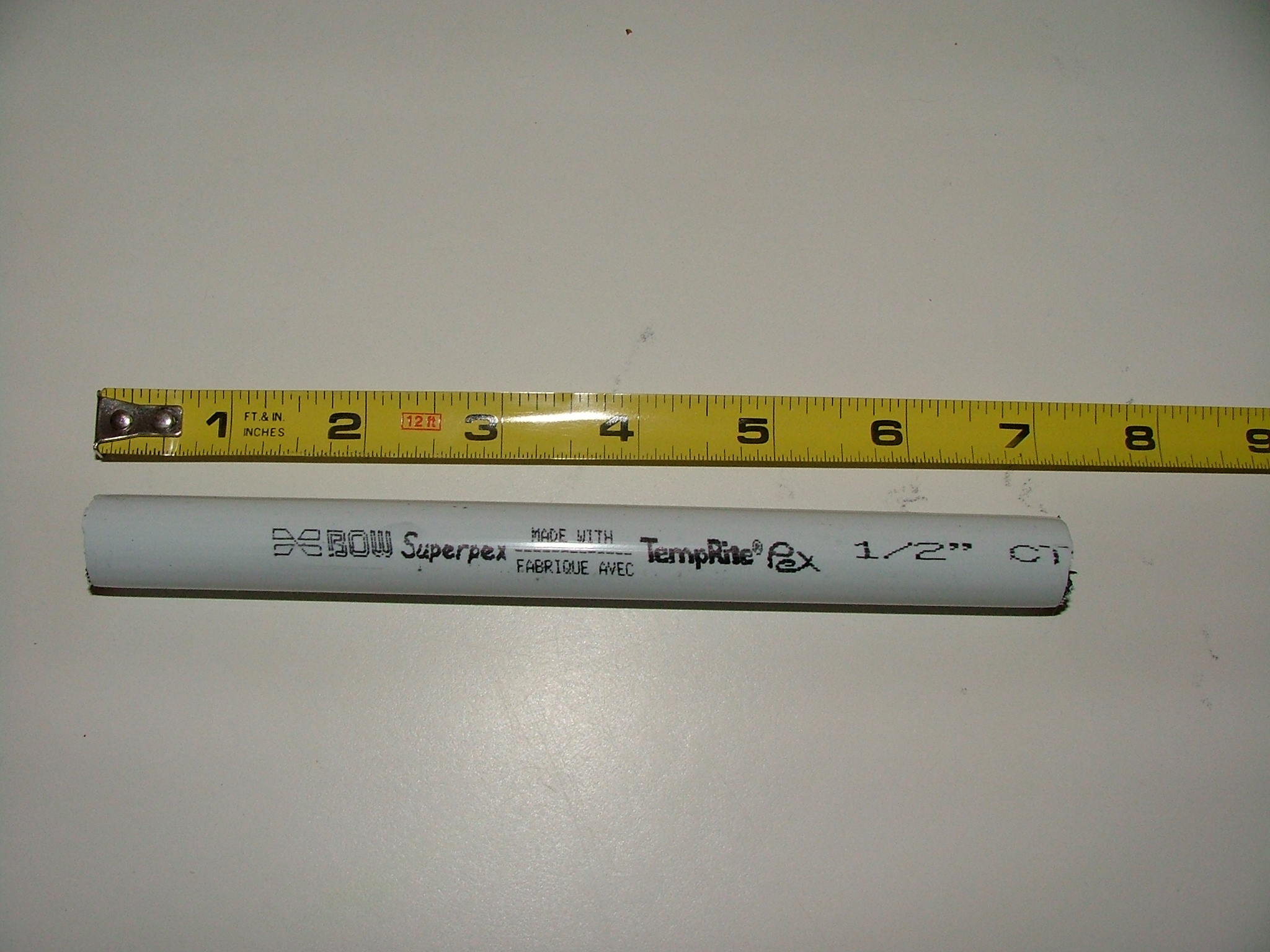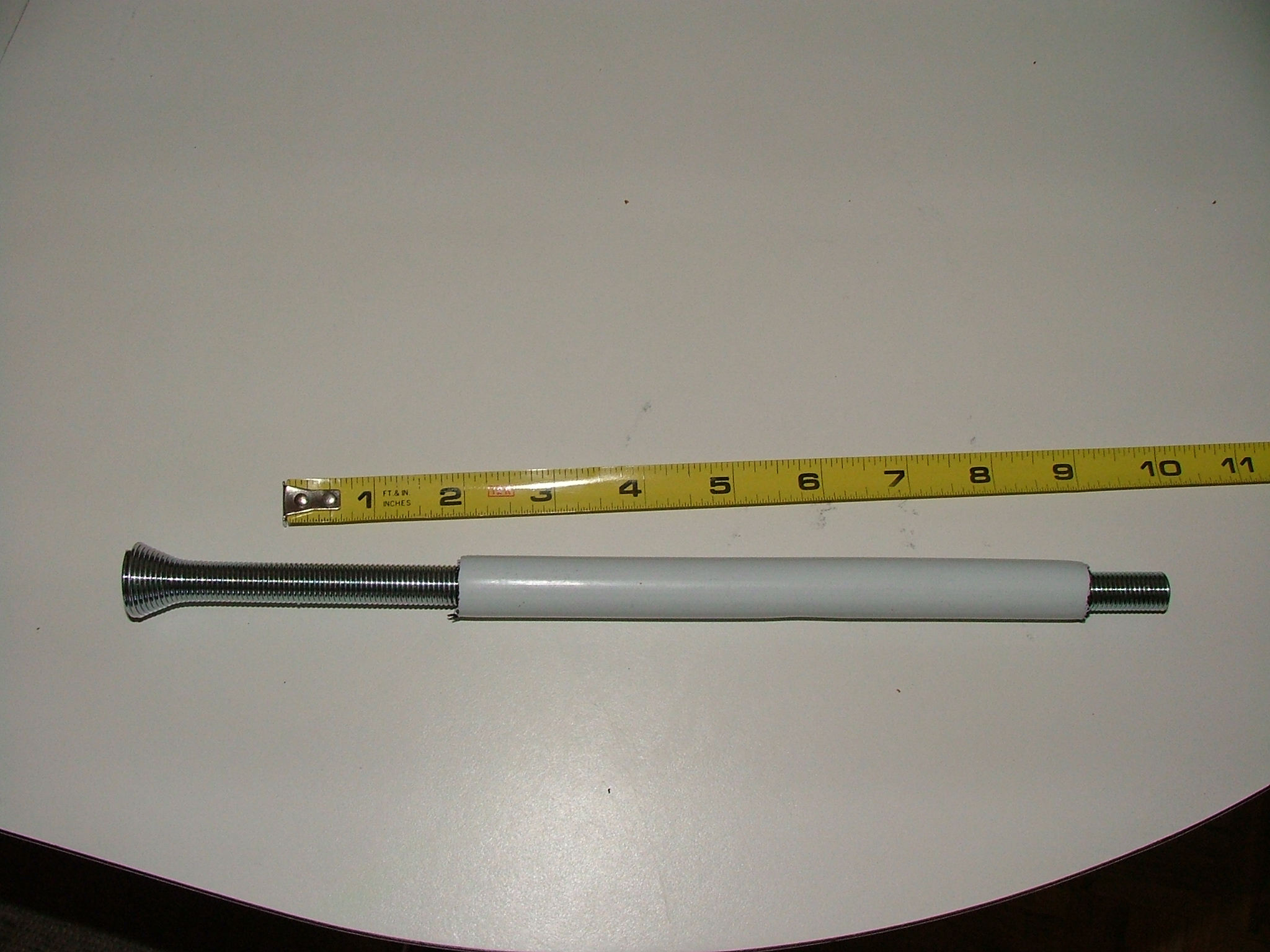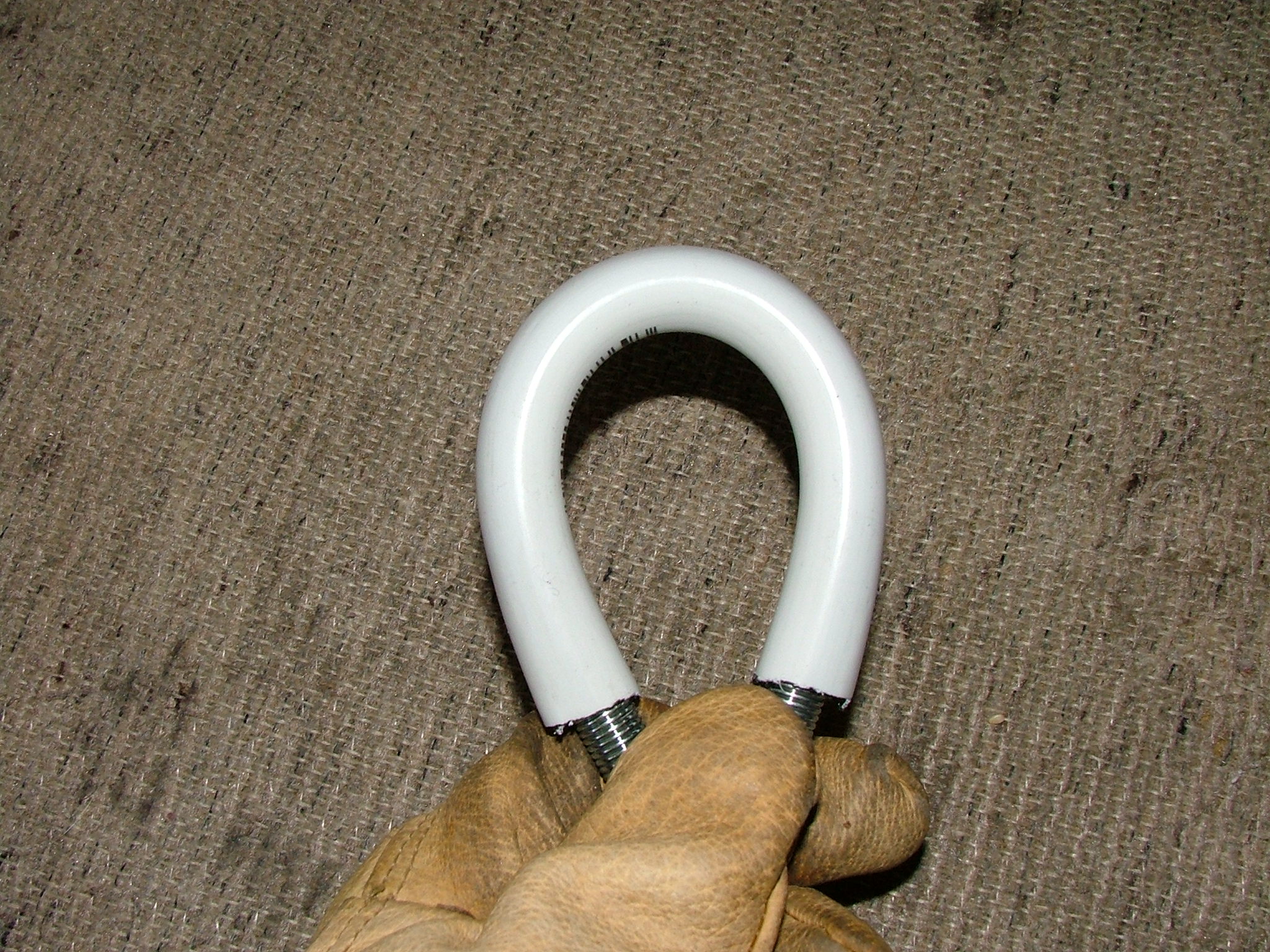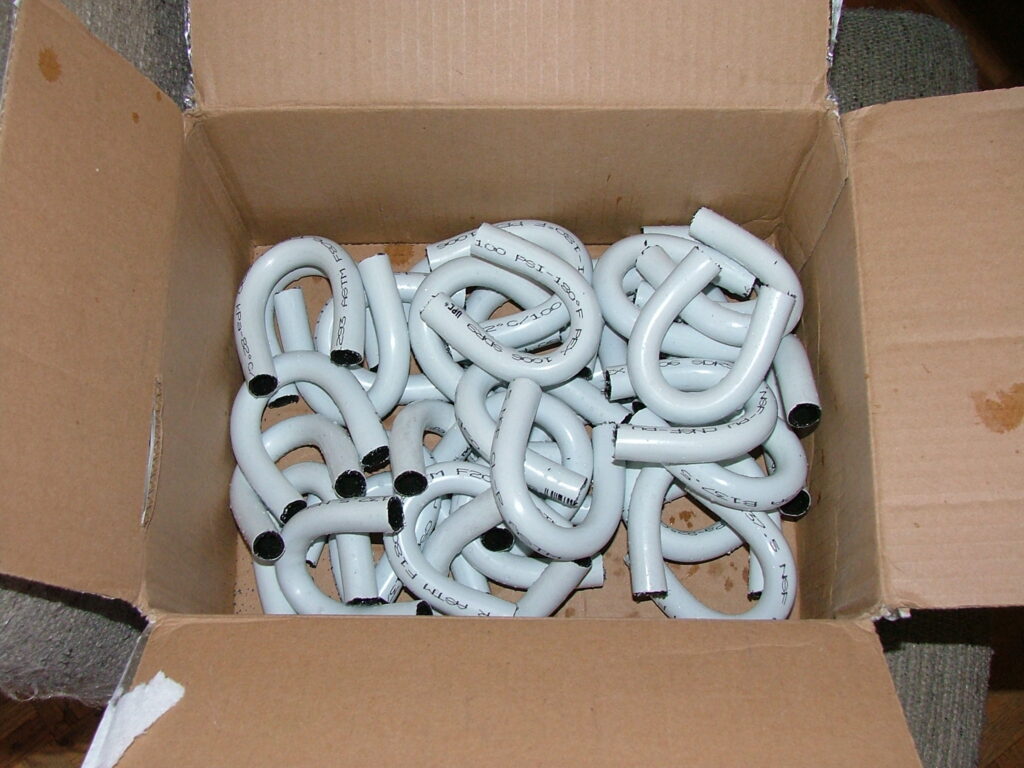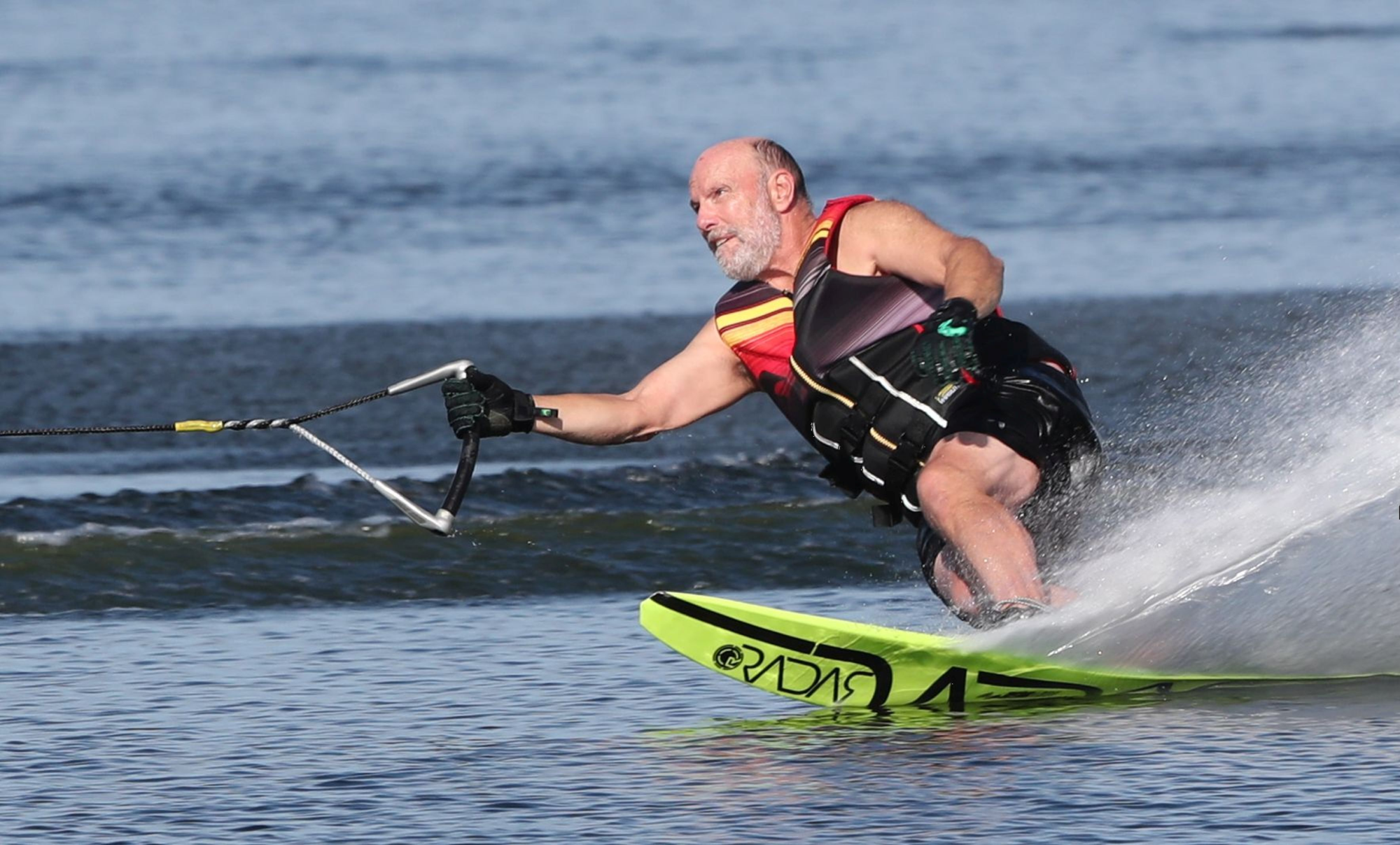Limited details of a water ski slalom course that can be made to self adjust as the water level in the lake raises and lowers.

The pink sub float is sized so that it floats 1/2 the amount of a properly inflated slalom ball. The rope used in the system is hollow braid rope. TWISTED rope WILL NOT WORK. The skier ball is clipped to the anchor rope. The anchor rope goes down THROUGH the tube in the sub float to the “pulley” on the anchor at the bottom of the lake and comes back up and attaches to the bottom of the pink sub float (ties to the hole in the grey tube).
How it works: The sub float is trying to come to the surface. It pulls the skier ball down but the skier ball has more floatation so the sub float cannot pull it under water. If the water level lowers, then the skier ball is lower and the sub float comes closer to the surface.
When a skier ball is pulled off (rope hook, ski fin, or intentionally removed) the sub float tries to float to the surface BUT the knot/clip for the skier ball stops at the top of the sub float when it hits the grey tube and the sub float stays just below the surface.
To reattach a ball, either swim and find the sub float and pull up on the CLIP (not the float!!!). Pulling up on the clip will pull the sub float down and allow the clip to come to the surface to attach the skier ball. You can use a hook on a pole to hook the clip and pull it up allowing you to reattach a ball without getting wet!
Pictures show the sub float construction. Glue used is as pictured or gorilla glue. They work best when the foam is wet!!! I wet sanded the blocks to roughen them a bit and wet them. The grey tube is 1/2″ pvc electrical conduit. The “pulleys” had to be cheap and I found that a piece of PEX tubing allowed the wet rope to slip nicely and never wear through. Pics show how I bend them unto a U shape and the rope that holds them to the anchor block goes through the PEX tube and ties to the anchor.
In the pictures you will see how the sub floats are made. The dimensions shown have TOO MUCH floatation and tend to pull the skier balls down under water. There are two solutions to this. One is to reduce the sub float size, the second is to “pin” the ball at the right depth. We use the second approach because that allows us to VERY accurately set the depth of the ball for an RC tournament where the correct floatation approach will have some variances due to friction and skier ball inflation that cannot be tolerated in a tournament. The “pin” technique involves getting the ball at the correct level then putting a pin through the rope right at the top (ABOVE ) of the sub float. This prevents the sub float from coming up and pulling the ball deeper. This can be done from the surface easily and adjusted easily (trial and error but you stay dry). Pull up the skier ball, stick a pin through the rope where you think it should be (we use long plastic golf tees) and then push the skier ball underwater and see what level it comes up and floats at. If it floats too high just move the pin closer to the skier ball in the rope.
This system has worked very well for us up in the northern climate where the lakes freeze. Make sure when the skier ball is removed the sub float is deep enough to below the ice in winter to avoid dragging anchors as the ice goes out. One big perk is at the end of the season you do not have to get wet to pull the slalom course for the winter! All you do is pull up beside the ball and lift the ball and unclip it. If you have pinned the ball as described above, remove the pin for winter so the sub float comes all the way up or the sub float will be hard to find in the spring when too deep. In the spring, we also stay dry putting the course in. We use a pole with a hook to hook the clip ABOVE the sub float and we can pull it up to the surface and clip on the ball.
The system tends to work best when the water is 8-20 feet deep. Shallow water limits the travel of the sub float. Using a flat patio stone instead of a cinder block as an anchor in shallow water would allow the sub float to go deeper and give more travel. For deep water, the system still works but having the rope go all the way down and all the way back up is extra expense and leaves too much rope to rope contact area for friction. In that case I recommend that the “pulley” not be directly at the anchor on the bottom. Have it attached to a single rope that comes from the anchor to a depth of 10-20 feet and put a small sub float below it to allow you to find it if the worst happens. Then run the self adjusting through it at that depth so you minimize the double rope portion…
